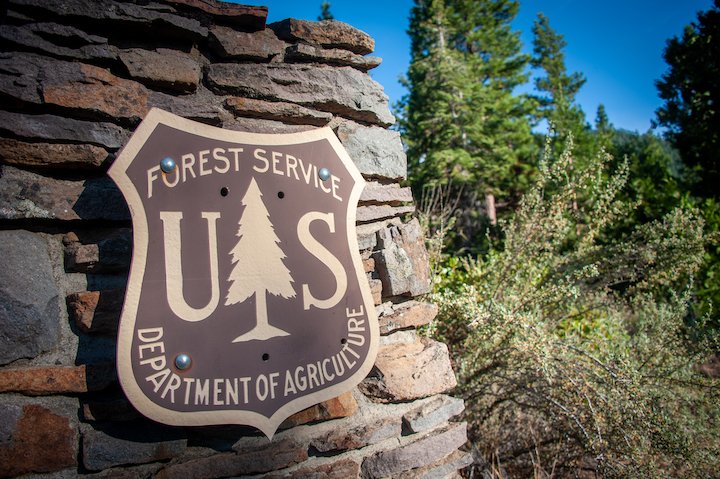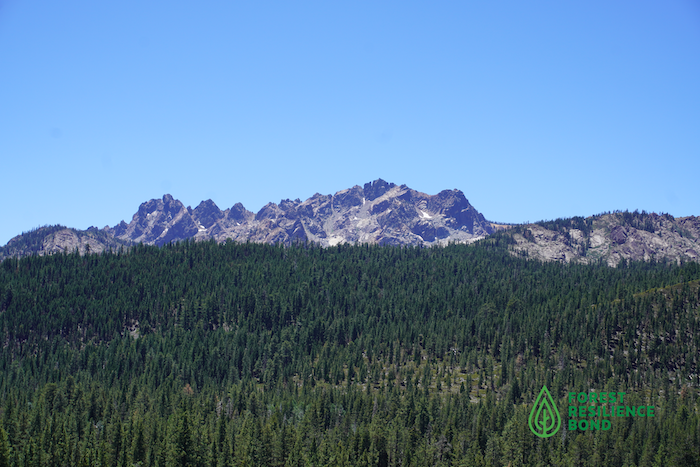Forest Service 10-Year Wildfire Strategy Funding Announced


On Monday, USDA Secretary Vilsack announced $131 million to begin work on the Forest Service’s 10-year wildfire strategy. The initial investment allocates funding across 10 landscapes to support 208,000 acres of wildfire risk reduction treatments. Blue Forest is excited to continue working with our partners on two of these landscapes: the North Yuba Landscape in California and the Central Washington Initiative.
Written by: Mac Cloyes and Jeannie Davidson
On Monday, USDA Secretary Vilsack announced $131 million to begin work on the Forest Service’s 10-year Wildfire Strategy. The initial investment allocates funding across 10 landscapes to support 208,000 acres of wildfire risk reduction treatments. Blue Forest is excited to continue working with our partners on two of these landscapes: the North Yuba Landscape in California and the Central Washington Initiative.
The Forest Service’s 10-year Wildfire Strategy calls for treating up to an additional 20 million acres on National Forest System lands, and up to an additional 30 million acres on other federal, state, tribal, and private lands. Treating an additional 50 million acres over the next 10 years will cost an estimated $50 billion. The Infrastructure Investment and Jobs Act (IIJA) provided about $3 billion to reduce hazardous fuels and restore forests and grasslands. While this new funding source will move the needle accomplishing high priority work, it represents a small fraction of the overall resources needed. Working with partners to match federal funding with non-federal funding, through tools like the Forest Resilience Bond, is one way to make Forest Service funding get even more work accomplished.
North Yuba Landscape

The North Yuba landscape will receive $6.8 million in wildfire strategy funding in 2022, with a total investment of $25.5 million FY 2022-2024. According to the Forest Service, the “North Yuba Landscape is the proving ground for innovations, including community based biomass utilization development, large-scale planning, and conservation finance through the first two Forest Resilience Bonds that leverage substantial private sector investments to help fund implementation of this work.” The landscape covers the 313,000-acre North Yuba watershed, which is one of the largest contiguous “unburned” landscapes remaining in the Sierra Nevada Mountains. The area includes thousands of acres of unique habitat, is an important source of water to downstream users, supports high biodiversity, is home to many communities and offers excellent opportunities for recreation.
Blue Forest Highlight
Blue Forest is an early partner in this landscape. Working with our partners, we launched the first Forest Resilience Bond (Yuba I FRB) on the Tahoe National Forest in the North Yuba watershed in 2018, financing $4 million of forest treatments to protect and restore 15,000 acres. Collaboration around the Yuba I FRB has laid the groundwork for a new regional partnership to support forest management activities. In 2019, nine federal, state, tribal, and nongovernmental partners established the North Yuba Forest Partnership, a collaborative focused on forest restoration across 275,000 acres of public and private lands in the North Yuba watershed. The partnership plans to use the Forest Resilience Bond to finance more than $100 million of restoration work across the North Yuba River watershed. Building off the success of the Yuba I FRB and the collaboration of the North Yuba Forest Partnership, in 2021, we launched the second Forest Resilience Bond (Yuba II FRB), financing $25 million of forest treatments to protect and restore 48,000 acres.
Forest Service Expected Outcomes of the North Yuba Landscape
Forest Service expects the following outcomes from funding this landscape:
-
In addition to reducing the fire risk to the communities of Camptonville, Goodyears Bar, Downieville, Sierra City, the Yuba Water Agency infrastructure, and others within the North Yuba watershed, the project will improve forest conditions across the landscape to enhance fire resilience and adaptability to a changing climate.
-
The project aims to improve watershed resilience by safeguarding 260,000 acre-feet of water supply for 60,000 acres of productive farmland while also protecting water quality in the Sacramento Delta.
Central Washington Initiative

The Central Washington Initiative (CWI) will receive $24.6 million in wildfire strategy funding in 2022, with a total investment of $102.6 million FY 2022-2024. The CWI landscape includes the Okanogan-Wenatchee National Forest and State and private lands across four counties, including six high-risk firesheds. This project area covers 2.45 million acres (1.35 million acres USFS lands, 1.1 million acres non-USFS lands). The initiative takes a proactive “all hands, all lands” approach, and prioritizes partnerships with the Washington Department of Natural Resources (WA DNR), Washington Department of Fish and Wildlife (WDFW), Confederated Tribes and Bands of the Yakama Nation, Confederated Tribes of the Colville Reservation, local forest collaboratives, counties, and nonprofit partners including Blue Forest Conservation.
Blue Forest Highlight
In 2020, Chelan County initiated discussions with Blue Forest about the potential of a Forest Resilience Bond (FRB) to advance shared stewardship goals in the region, and specifically the Upper Wenatchee Pilot Project (UWPP). The UWPP is a 75,000 acre project to restore forest and watershed health on the Okanogan-Wenatchee National Forest. The project provides a host of economic and environmental benefits to the area including (i) wildfire risk reduction, (ii) improved safety, fire protection, and smoke exposure reduction for people, homes, and communities, (iii) water resources protection, and (iv) job creation and economic benefits.
In early summer 2021, WA DNR contracted Blue Forest to perform a feasibility study for using conservation finance tools to increase the pace of implementation of the UWPP. Blue Forest found that the project has all the fundamental elements necessary for successful deployment of the Forest Resilience Bond model. Blue Forest is continuing to work with the Okanogan-Wenatchee National Forest, Chelan County, and Washington Department of Natural Resources on taking the next steps towards FRB development.
Forest Service Expected Outcomes of the Central Washington Initiative
Forest Service expects the following outcomes from funding this landscape:
-
Wildfire smoke exposure will be reduced in Wenatchee, Leavenworth, Yakima, Chelan, Naches, Cle Elum, Winthrop, and other smaller communities adjacent to the forest.
-
The CWI’s landscape includes six priority watersheds under the Watershed Condition Framework and hundreds of miles of habitat for threatened and endangered anadromous and resident fish species. In addition to fuels reduction, the CWI will include targeted aquatic restoration to complement wildfire risk reduction work, enhancing overall forest and watershed health through improved resiliency and maintained water supplies for municipal sources on National Forest System lands serving the communities of Yakima, Cashmere, and Chelan Falls.
Role of the Forest Resilience Bond in Supporting Federal Resources
One question this new funding raises: do we really need FRB-type investment if the federal government is investing all of this funding? The answer is a resounding yes! While we are extremely excited to see this level of federal investment being made, we must put this into perspective. The 10-year wildfire strategy calls for treating up to an additional 20 million acres on national forests and grasslands and up to an additional 30 million acres of treatments on other federal, state, tribal, and private lands. IIJA provides a down payment toward funding this work, but at an estimated cost of $50 billion, there remains a significant funding gap to achieve the goals set forth in the 10-year wildfire crisis strategy. Public-private partnerships, and the FRB model specifically, position the Forest Service and partners to meet the ambitious goals of the 10-year wildfire strategy by leveraging non-federal resources to get more work completed with limited federal funding.
The FRB can also bring flexible funding to the landscape, enabling partners to respond to changing conditions and invest in best practices, without being constrained by programmatically defined state or federal funding. On the Yuba project, flexible funding has allowed local non-profit partners to build capacity, ensure all actions within a given footprint are completed, and cover unanticipated costs that arise during implementation. For example, in the Yuba I FRB, the National Forest Foundation and Blue Forest leveraged this flexibility to transport the “wood waste” from fuels reduction to renewable woody biomass electrical generation facilities, which avoided pile burning and generated over 8,000 MWh of electricity.
The Forest Resilience Bond is more than just a financial instrument; it is a collaborative management strategy that enables the many parties that benefit from forest restoration to support projects on NFS lands. The FRB facilitates collaboration by providing a structure to convene diverse partners, remove barriers to participation, articulate clear roles and responsibilities, measure impact, and build long-term relationships.